Large-scale cicada emergence, with periodical broods crawling out of the ground every 13 or 17 years, capture widespread attention when tens of thousands can mob en masse onto a single tree.
But even one cicada, emerging from its shell, is fascinating in itself.
Related Cicadas: Sounds of summer
The process can take an hour. Cicada nymphs dig their way out of the soil and climb up tree trunks, posts and poles. The outer shell of the nymph splits along the middle of the back, with the winged adult laboriously emerging, leaving its shell behind.
In this case, a cicada nymph crawled onto a cream-colored daylily in Iowa and began breaking free from its shell just before dusk. By the time the cicada fully emerged, it was after dark.
The shell remained dangling from the spent daylily the next day.
Despite their imposing figures, cicadas are harmless and don’t bite, sting or damage gardens.
Learn about another friendly insect, the lightning bug, and see more of the cicada emerging from its shell, below.
(Photos © Cindy Hadish/Homegrown Iowan)
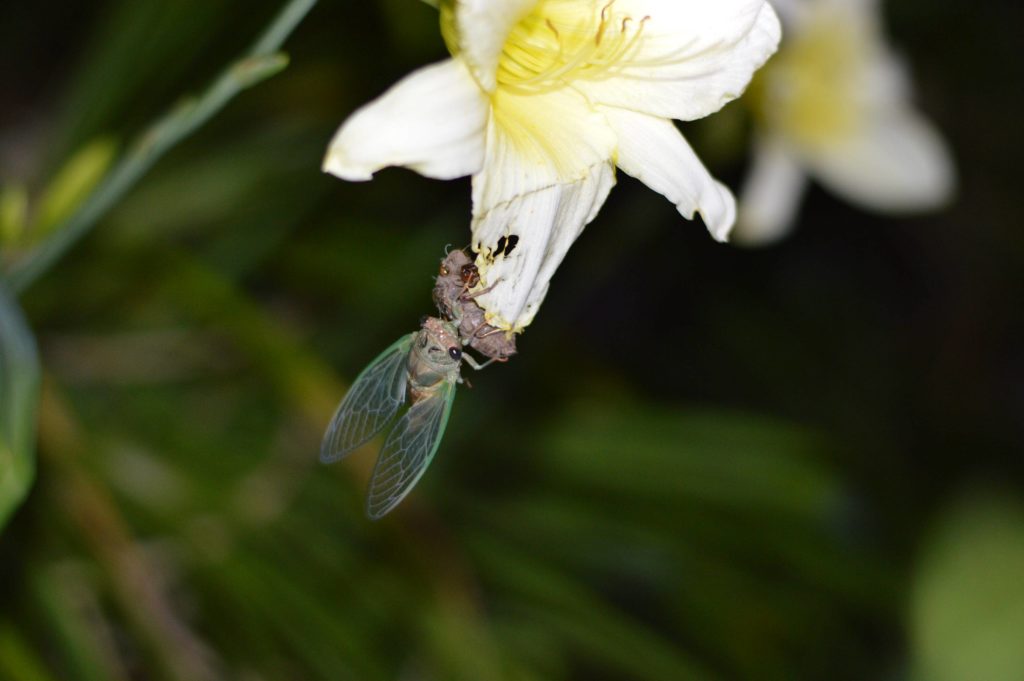
The cicada fully emerges from its shell, still clinging to the daylily blossom. (photo/Cindy Hadish)

The cicada shell remains on the day-old daylily blossom the day after the cicada emerges. (photo/Cindy Hadish)

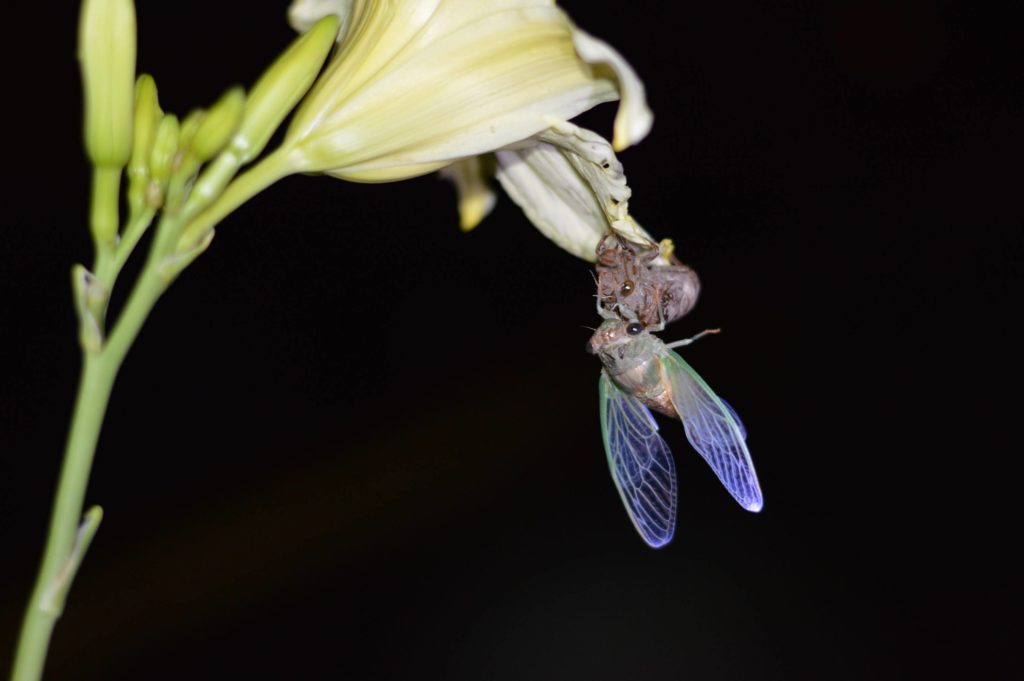
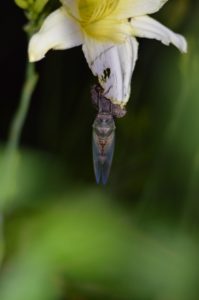
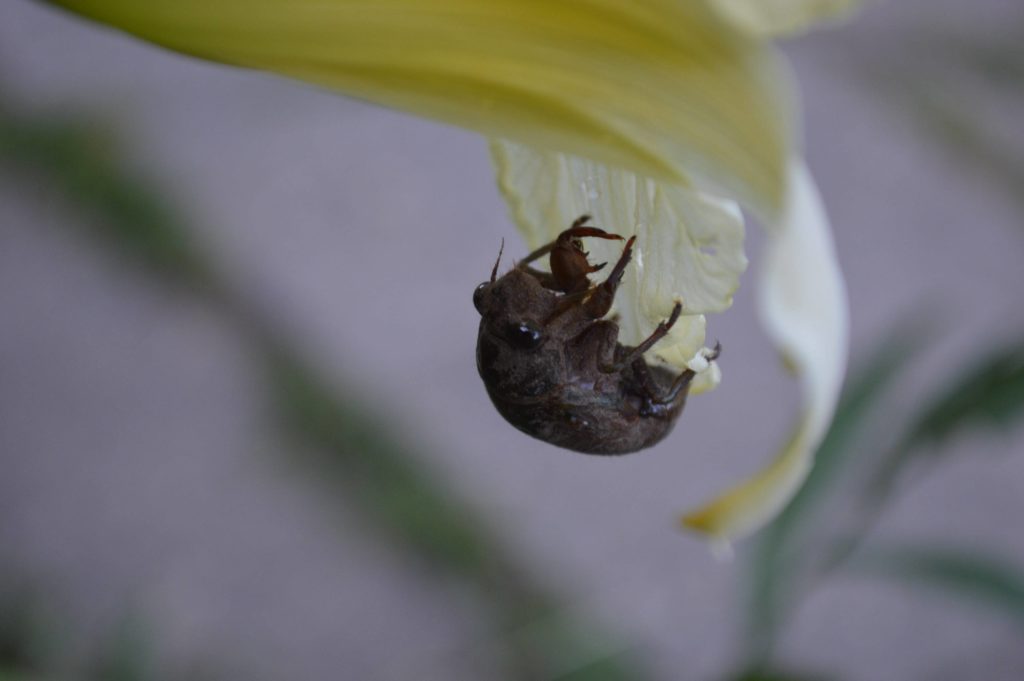
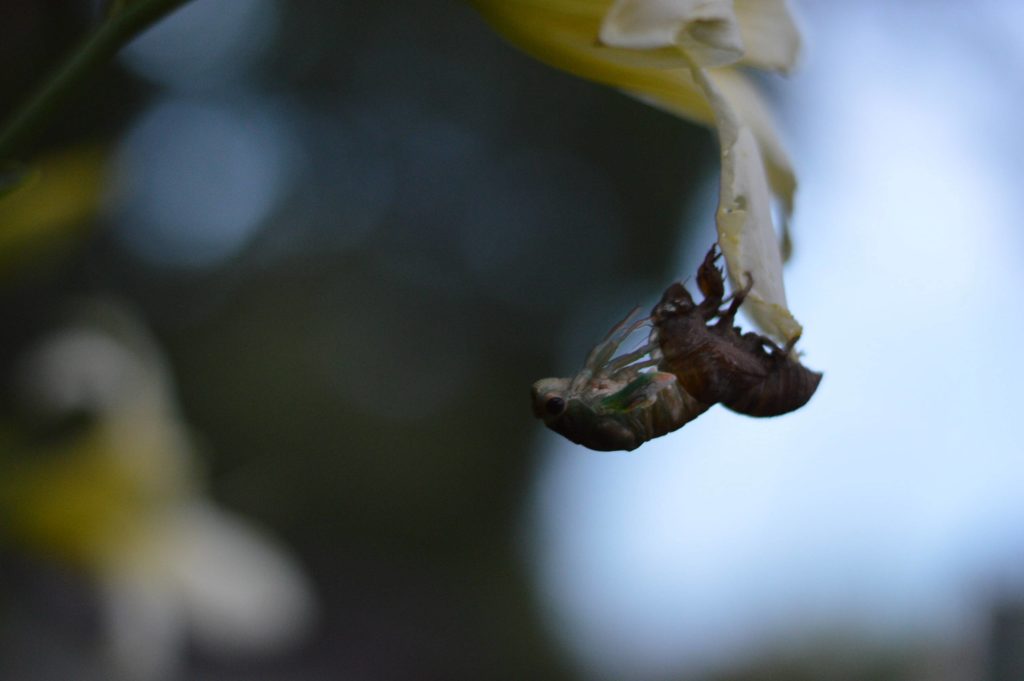
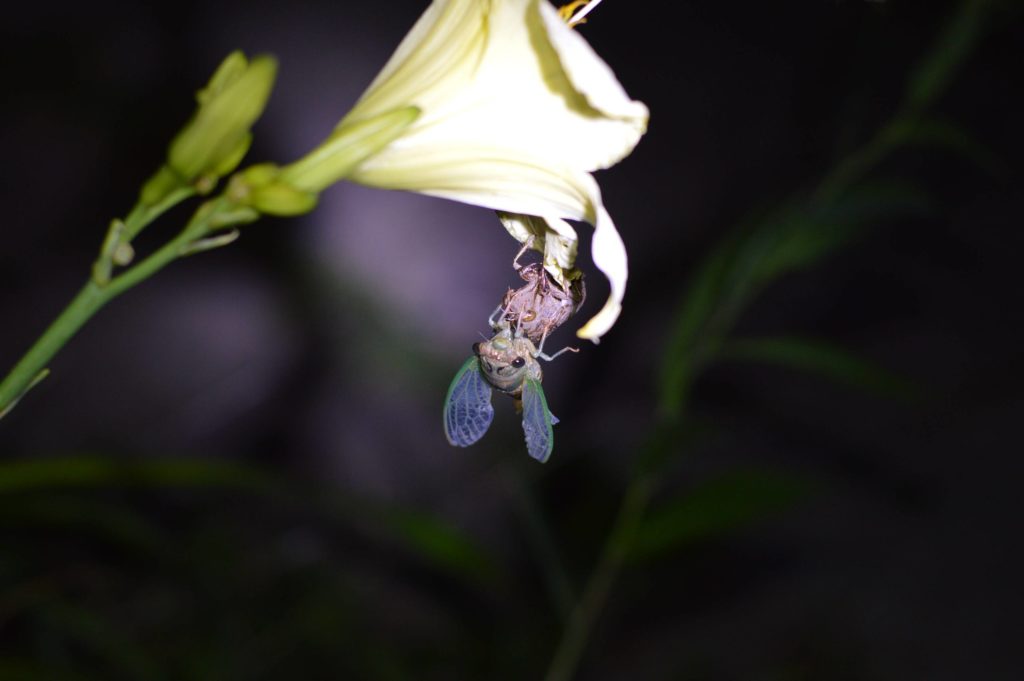
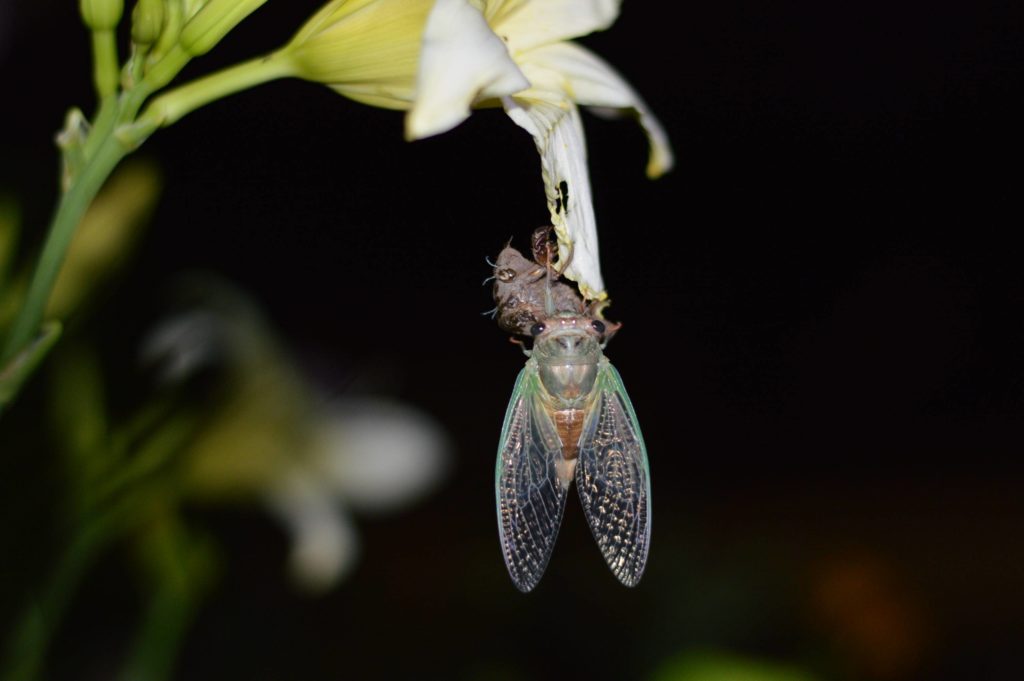
[…] See another annual summer appearance: Photos of a cicada emergence […]
[…] Read more: Nature Watch: cicada emergence […]